Last Mile Delivery Optimization: Ultimate Guide
We show you some of the biggest challenges of last-mile delivery and explain how last-mile delivery optimization will enable you to overcome them.
Home > Blog > Last-Mile Delivery Logistics Solutions: Why You Should Use Them
Delivery LogisticsCan last-mile delivery logistics solutions really help simplify the notoriously complicated (and pricy) last-mile delivery? In short - they sure can!
The first question that pops to mind regarding last-mile delivery logistics solutions is:
Can last-mile delivery logistics solutions really help simplify the notoriously complicated (and pricy) last-mile delivery?
In short - they sure can!
And in this blog, we’ll explain all the hows and the whys you’ll need to gain a better understanding of last-mile delivery logistics and all the challenges related to it.
We’ll break down bit by bit:
Last-mile delivery is the final step in the supply chain, i.e. the crucial business of getting the product into the hands of the end customer.
It can be less than a mile or several hundred miles long, but whatever the actual distance may be, last-mile delivery is always the most challenging and expensive part of the delivery process.
In fact, the cost of last-mile delivery accounts for more than half of total shipping costs.
There are several reasons for last-mile delivery to be as tricky and costly as it is, including the following:
With gas prices hitting new records every day, fuel costs are starting to take a severe toll on delivery services.
In fact, road fuel prices reached their peak on July 4 and are predicted to surge further.

When it comes to delivery services, this problem is exacerbated further by things like:
In short, the more miles your vehicles travel, and the more time they spend idling, the more fuel they’ll burn, which will have a rather unfortunate impact on your budget.
Delivery services have thrived in the COVID and post-COVID era, as they became somewhat of a necessity due to lockdowns and the need for contactless shopping.
However, that also means that the market has never been as competitive as it is today, with companies racing to win over customers by any means necessary.
And with companies like Amazon offering next-day or even two-hour deliveries and free shipping through Amazon Prime, the bar was raised even higher.
That means that customers nowadays have very high expectations of their delivery service.
In fact:
So, finding a way to provide a first-rate experience is crucial for retaining customers and gaining new ones.
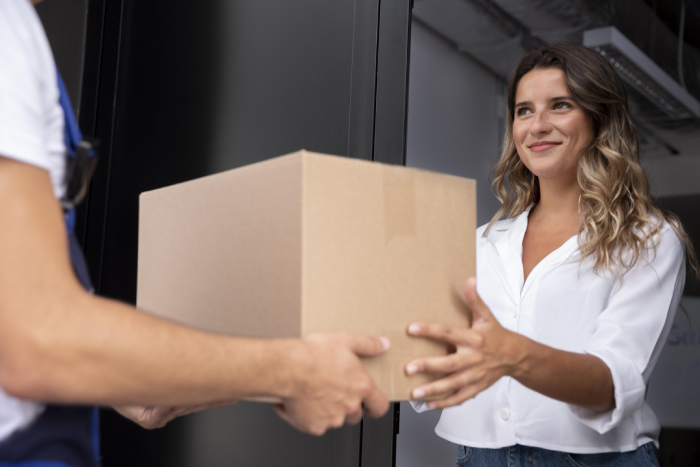
Several things that can boost customer satisfaction include:
Let’s face it - failed deliveries are a pain for both the customer and the service provider.
A failed delivery wastes your time, fuel, and staff costs, which must be paid all over again when it’s sent back out on a future date.
Since 5.6% of all UK deliveries fail on the first attempt, and the average cost of a failed delivery to UK businesses is £11.60, that means there could be lots of unwanted expenses headed your way.
If your fleet grows linearly alongside your workload, your costs will soar, as simple as that.
In this case, more isn’t necessarily better, as it often happens that the fleet you already have at your disposal isn’t used to its total capacity, meaning you don’t actually have to hire new drivers or acquire more vehicles to meet the demands you’re faced with.
Optimising your existing fleet and using it as efficiently as possible will help you save more money and provide excellent customer service at the same time.
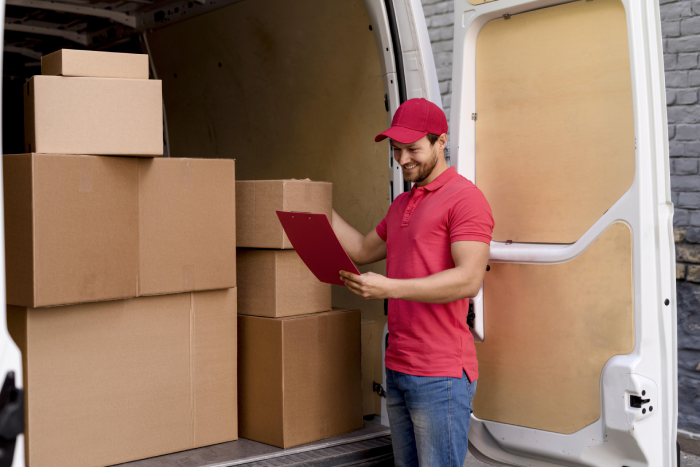
This can be done by route optimisation first and foremost, as it reduces the number of hours spent idling and on the road.
But other factors, like being able to easily match the right type of vehicle with a particular delivery so that it can be used to its total capacity, will also significantly impact your overall efficiency.
Last-mile delivery logistics solutions can help you save valuable resources by making every part of the delivery process work like a well-oiled machine.
The features that enable users to do more than just take care of the routing make the real difference between a good and a great last-mile delivery logistics solution.
Options that can help improve overall customer satisfaction and unlock the utmost efficiency of your entire fleet are something that undoubtedly tips the scale in favour of a platform that can offer them to prospective users.
So, we’ve concluded that the best-in-class last mile delivery logistics solutions should include much more than route planning alone.
That means you should keep an eye out for several other functionalities besides route planning-related ones.
1. Dynamic routing
2. Maximising your fleet’s efficiency
3. Keeping customers up-to-date on their delivery status
4. Failed deliveries workflow
5. Different methods of POD
6. Performance analytics
7. Easy integration with the wider supply chain
Dynamic routing includes more than route planning and optimisation as such.
This kind of routing considers all the possible unforeseen circumstances that happen on the road that affect the ETA and the optimal route while the vehicles are already in motion.
Only a solution capable of adapting in real-time to all the factors affecting deliveries can meet today’s market demands.
One such solution is eLogii, as it incorporates all the must-haves of dynamic routing, such as:

Moreover, when finding the optimal route and calculating ETAs, eLogii will take into account things such as drivers’ breaks or the time needed to pick up or drop off deliveries, among other things.
Want to try out eLogii’s dynamic routing features firsthand?
This encompasses the usage of both your vehicles and drivers to the best of their capacity.
That means you need features that will enable you to easily get the right packages into the right vehicles and get as many as possible into each one.
So, a good last mile delivery logistics solution should include options for:

eLogii provides users with more options regarding fleet efficiency optimisation than any other competitor on the market.
It also lets you stay in touch with your fleet the whole way through via its dedicated mobile app.

By using it, you can do things like:
Nowadays, customers expect to be kept in the loop during the delivery process, as well as have more flexibility regarding delivery times.
So, to stand out from the competition, you should include features that enable customers to have more control over their delivery, such as:
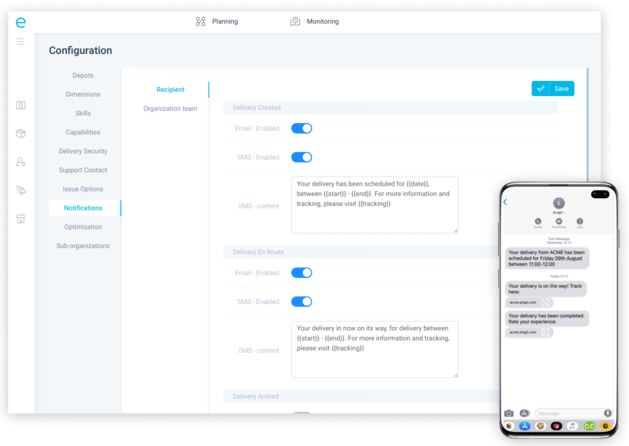
As we’ve mentioned before, failed deliveries are not that rare in the delivery business.
Whether a delivery will be successful or not depends on numerous factors you cannot always predict nor control, which is why you should always have a backup plan.
That’s why setting up workflows for drivers to follow in case of a delivery gone awry is always a good idea.
Having a plan B will help you save time, money and overall resources that would be wasted on repeating the whole process from the very beginning.
You could, for example:
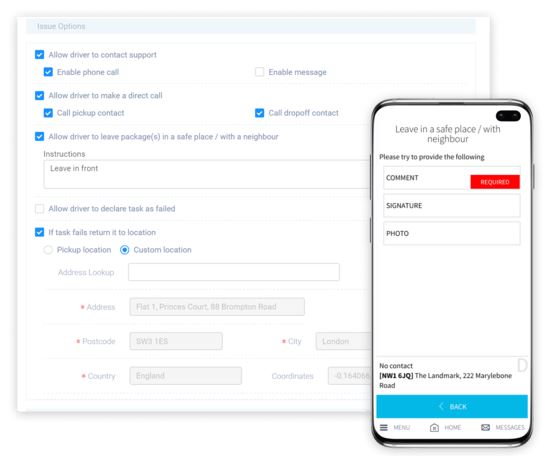
Moreover, you could take measures to prevent deliveries from failing in the first place, or at least minimise the risk thereof, including:
Proof of Delivery (POD) is another vital part of any logistics operation. Businesses need to be able to verify and prove that their customers have received their orders.
That way, both you and your customers can have peace of mind regarding the status of any given delivery.
That’s why having a robust POD system is critical for ensuring that nothing goes astray - and that if there ever is a dispute about where a package has gone, there’s a tangible trail to show where it ended up.
In the past, drivers would have to collect signatures on paper as the only POD method possible.
Today, on the other hand, technology allows various other forms of POD collection that are much easier to save, collect and send instantly from the field to the system.
eLogii comes with a wide variety of POD methods, including:
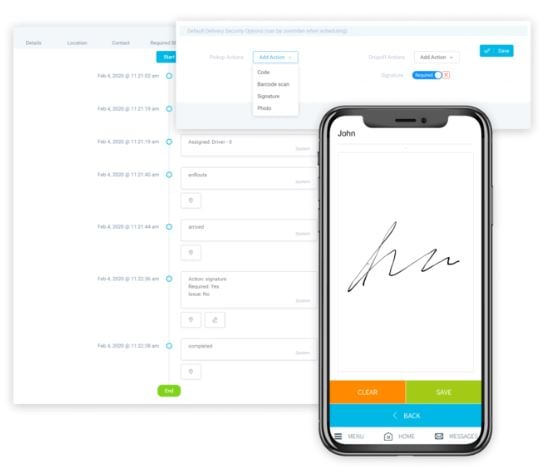
These are collected on drivers’ phones via the mobile app, which automatically time- and geo-stamps the POD for complete traceability.
Gaining insight into critical data can help you compare your plans and predictions with the way things actually played out on-field.
That way, you’ll know how to allocate your resources optimally and what, if anything, needs adjustment and improvement.
A good solution will collect and report on:

Last-mile delivery, as its name implies, is the last step of a complex process that leads a package from its manufacturer to the warehouse, then to the distribution hub and, finally, to the end customer’s doorstep.
That means that last-mile delivery does not stand alone, nor does it exist in a vacuum, but is part of a much bigger operation that has to be well organised and coherent.
So, being able to integrate that final piece of the puzzle with the big picture, i.e. the wider supply chain, will help you achieve much better results than you would if you disregarded the rest of the process.
Finding a solution with a well-designed API can save you huge amounts of developer time in getting your tech stack to work efficiently.
A good API and webhooks mean that you’ll easily integrate it with all the other tools you use - like order processing, inventory, and supply chain management.
eLogii has been designed to integrate smoothly with order management, warehouse operations, and many other types of software via an extensively-documented API and webhooks.
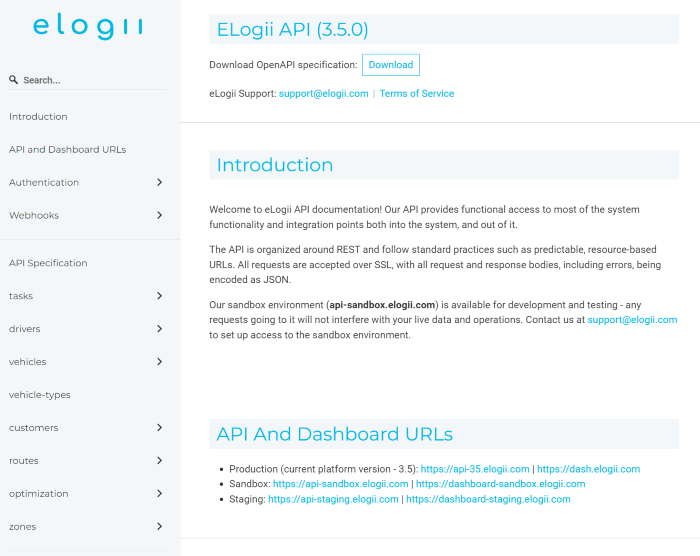
That enables you to easily connect every piece of the supply chain and get them working together like a well-oiled machine.
Delivery services have undergone some major changes in the past couple of years.
So, when dealing with a market that’s constantly shifting, changing and posing new challenges, you have to be able to respond to those demands on the go, or it could very well cost you your entire business.
That’s where last-mile delivery logistics solutions step in, as they’ll ensure you’ll be ready to quickly adapt and overcome any challenges you may face in the future.
However, using a last-mile delivery logistics solution that’s not fit for the task can often be worse than not using one at all.
Thus, when choosing between last-mile delivery logistics solutions, make sure to for the one that has all the features necessary to help you stay at the top of the game, including:
Fortunately, there’s one software solution that ticks all of these boxes…

We show you some of the biggest challenges of last-mile delivery and explain how last-mile delivery optimization will enable you to overcome them.
Looking to save money on delivery? And win over more customers? Here's how you can do it with last-mile route delivery optimization and eLogii.
This is a complete guide to last-mile delivery. Learn: What is last-mile delivery? How it works? How to improve your last-mile operations? +more
Be the first to know when new articles are released. eLogii has a market-leading blog and resources centre designed specifically to help business across countless distribution and field-services sub sectors worldwide to succeed with actionable content and tips.
